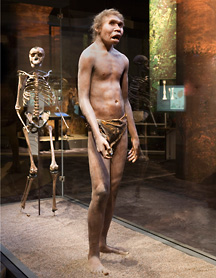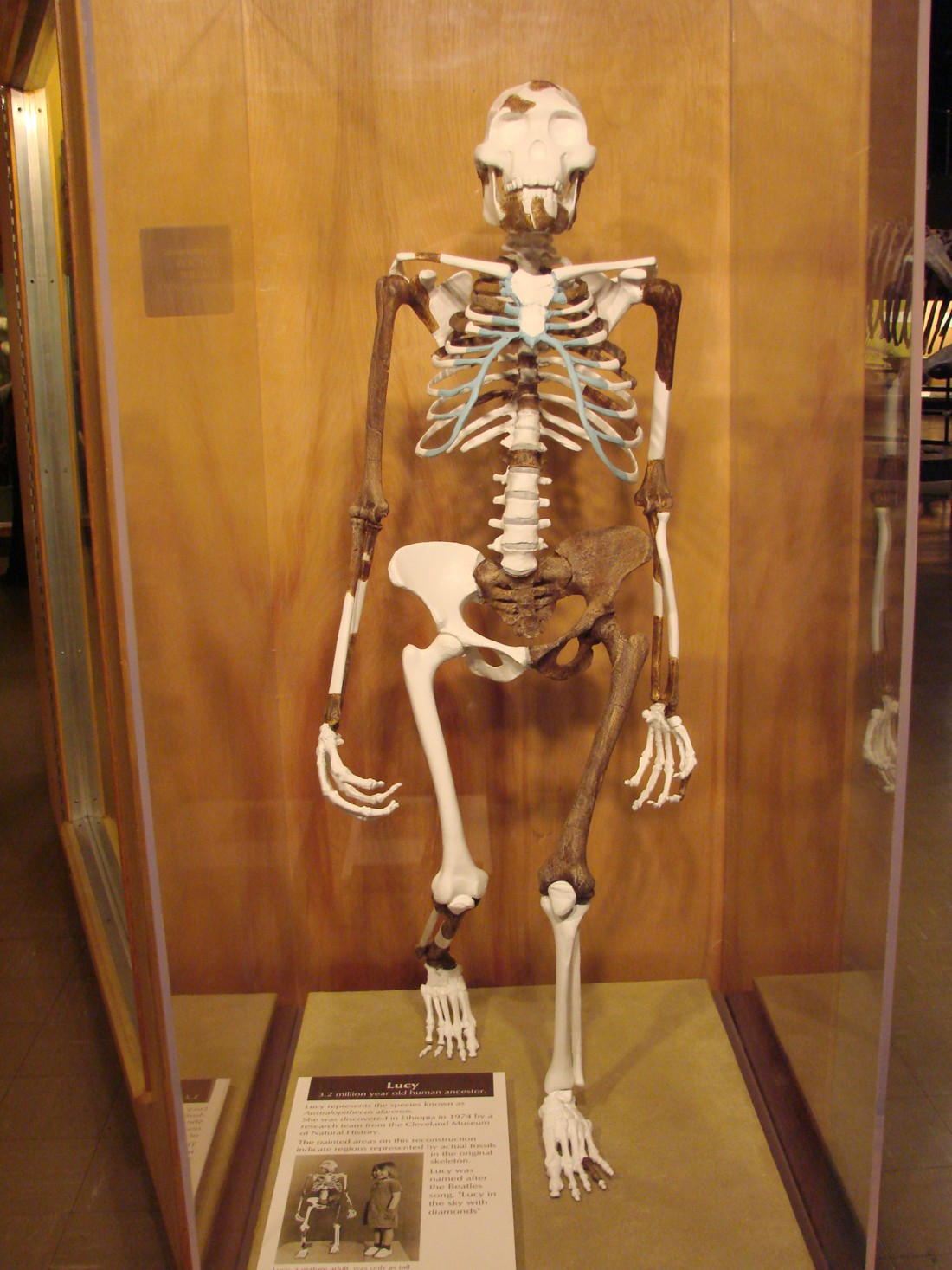 |
| Omo Remains |
The Omo Remains
Discovered in 1967 Ethiopia by Richard Leakey. Estimated to be a 190,000 year old Homo sapiens sapiens skull.
Oldest known Homo sapiens sapiens fossil, the reason modern humans are estimated to be 200,000 years old.
Discovered in 1984 Kenya by Kamoya Kimeu. Estimated to be a 1.6 Million years old Homo erectus skeleton.
He is the most complete archaic human skeleton ever found.
Discovered in 1974 Ethiopia by Tom Gray, Donald Johanson, Yves Coppens and Maurice Taieb. Estimated to be a 3.2 million year old Australopithecus afarensis skeleton.
Lucy's discovery was significant because her skeleton showed evidence of small brain capacity like an ape, along with an upright walk like a human. Suggesting that humans first began to walk upright before their brains grew bigger.
 |
| Skhul Remains |
Discovered between 1929 and 1935 in Israel. Estimated to be 80-120,000 years old. The remains of seven adults and three children with a mix of West African modern human and Neanderthal features. The discovery of the Skhul remains is important because it suggests genetic admixture may have occurred between modern humans and archaic humans.
More Information Here.
 |
| Qafzeh Remains |
The Qafzeh Remains
Discovered in 1934 during the excavation of Rene Neuville cave in Israel. Estimated to be 90-100,000 years old.
The remains are of up to 15 individuals, with both modern and archaic human features. The discovery is important because it supports the theory that modern humans and archaic humans interbred in Asia after migration from Africa.
More Information Here.
 |
| Denisovan Tooth |
Denisovans are a recently discovered species of archaic human. The tooth and a finger bone was discovered in 2010, inside a Cave in Russia.
Estimated to be 41,000 years old, the discovery of a new species of human is significant because they were around at the same time as Neanderthals, increasing the possibility of genetic admixture.
More Information Here.
| Kent's Cavern 4 upper jaw bone |
Kent's cavern is a cave situated in the south of England. Inside the cave was found an upper jaw bone of a modern human which is estimated to be 37,000 - 45,000 years old. The finding of Kent's Cavern 4 is significant because it is the oldest modern human fossil found in England, suggesting that modern day Europeans are a younger generation of modern human.
More Information
 |
| Cro Magnon Man Skull |
The Cro Magnon Man skull belongs to a modern human who is estimated to have lived 27,000 years ago in France. His discovery was significant because the skull had a larger cranial capacity than modern humans today. On average modern humans have a cranial capacity of 1,400 cubic cm, the Cro Magnon man had a cranial capacity of 1,600 cubic cm. The Cro Magnon was solidly built and more powerful than modern humans today, they were the first modern humans to develop a prominent chin. More Information


No comments:
Post a Comment